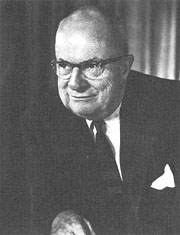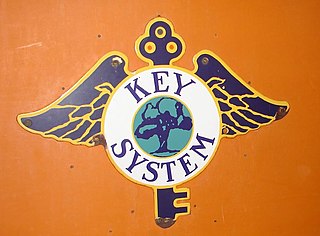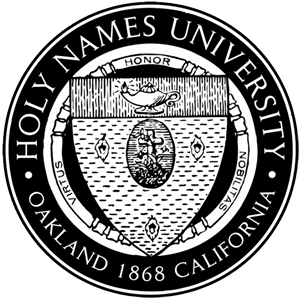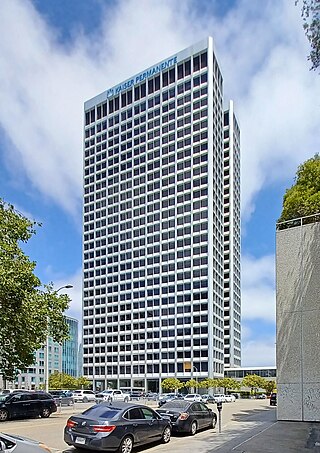
Oakland is the most populous city and the county seat of Alameda County, California, United States. A major West Coast port, Oakland is the largest city in the East Bay region of the San Francisco Bay Area, the third-largest city overall in the Bay Area and the eighth-most populated city in California. With a population of 440,646 in 2020, it serves as the Bay Area's trade center and economic engine: the Port of Oakland is the busiest port in Northern California, and the fifth- or sixth-busiest in the United States of America. A charter city, Oakland was incorporated on May 4, 1852.

Kaiser Permanente is an American integrated managed care consortium, based in Oakland, California, United States, founded in 1945 by industrialist Henry J. Kaiser and physician Sidney Garfield. Kaiser Permanente is made up of three distinct but interdependent groups of entities: the Kaiser Foundation Health Plan, Inc. (KFHP) and its regional operating subsidiaries; Kaiser Foundation Hospitals; and the regional Permanente Medical Groups. As of 2023, Kaiser Permanente operates in eight states and the District of Columbia, and is the largest managed care organization in the United States.

Henry John Kaiser was an American industrialist who became known as the father of modern American health care. Prior to World War II, Kaiser was involved in the construction industry; his company was one of those that built the Hoover Dam. He established the Kaiser Shipyards, which built Liberty ships during World War II, after which he formed Kaiser Aluminum and Kaiser Steel. Kaiser organized Kaiser Permanente health care for his workers and their families. He led Kaiser-Frazer followed by Kaiser Motors, automobile companies known for the safety of their designs. Kaiser was involved in large construction projects such as civic centers and dams, and invested in real estate, later moving into television broadcasting. With his wealth, he established the Kaiser Family Foundation, a nonprofit, non-partisan, charitable organization.

The Key System was a privately owned company that provided mass transit in the cities of Oakland, Berkeley, Alameda, Emeryville, Piedmont, San Leandro, Richmond, Albany, and El Cerrito in the eastern San Francisco Bay Area from 1903 until 1960, when it was sold to a newly formed public agency, AC Transit. The Key System consisted of local streetcar and bus lines in the East Bay, and commuter rail and bus lines connecting the East Bay to San Francisco by a ferry pier on San Francisco Bay, later via the lower deck of the Bay Bridge. At its height during the 1940s, the Key System had over 66 miles (106 km) of track. The local streetcars were discontinued in 1948 and the commuter trains to San Francisco were discontinued in 1958. The Key System's territory is today served by BART and AC Transit bus service.

Laney College is a public community college in Oakland, California. Laney is the largest of the four colleges of the Peralta Community College District which serves northern Alameda County. Laney College is named after Joseph Clarence Laney. The college offers both certificates and credits for Associate of Arts degree, as well as prerequisites to transfer to four year universities. It is accredited by the Accrediting Commission for Community and Junior Colleges.

The Piedmont Avenue neighborhood is a residential and commercial district in the North Oakland region of Oakland, California. It is named for Piedmont Avenue, a commercial street known for dining and retail. The neighborhood is roughly bounded by Temescal and Broadway on the west, Oakland Avenue and the City of Piedmont on the east, the Mountain View Cemetery on the north, and the MacArthur Freeway section of Interstate 580 on the south.

Livermore Municipal Airport is three miles west of Livermore, California, in Alameda County, California. The Federal Aviation Administration (FAA) National Plan of Integrated Airport Systems for 2017–2021 categorized it as a regional reliever facility.

Kaiser Convention Center is a historic, publicly owned multi-purpose building located in Oakland, California. The facility includes a 5,492-seat arena, a large theater, and a large ballroom. The building is #27 on the list of Oakland Historic Landmarks., and was listed on the National Register of Historic Places in 2021.

The Kaiser Shipyards were seven major shipbuilding yards located on the United States west coast during World War II. Kaiser ranked 20th among U.S. corporations in the value of wartime production contracts. The shipyards were owned by the Kaiser Shipbuilding Company, a creation of American industrialist Henry J. Kaiser (1882–1967), who established the shipbuilding company around 1939 in order to help meet the construction goals set by the United States Maritime Commission for merchant shipping.

Holy Names University was a private Roman Catholic university in Oakland, California. It was founded in 1868 by the Sisters of the Holy Names of Jesus and Mary with which the university remained affiliated until it closed in 2023.

For other ports with similar names see: Port Richmond

USS Ganymede (AK-104) was a Crater-class cargo ship commissioned by the US Navy for service in World War II. She was responsible for delivering troops, goods and equipment to locations in the war zone. Named after the largest of the moons of Jupiter, Ganymede was the only ship of the Navy to bear this name.

The Ordway Building is a skyscraper located in downtown Oakland, California. The building lies close to Oakland's Lake Merritt and the tower contains 28 stories of office space. There are eight corner offices per floor, since the skyscraper has a H-shaped floor plan. Standing 123 m (404 ft), the tower is the tallest skyscraper in the city and the entire Bay Area outside of San Francisco.

Kaiser Center, also called the Kaiser Building, is a 28-story office building located at 300 Lakeside Drive, adjacent to Lake Merritt, in downtown Oakland, California, designed by the architectural firm of Welton Becket & Associates of Los Angeles. The property is bounded by Lakeside Drive, which terminates and joins Harrison Street at the site, 20th-, 21st-, and Webster-streets. When completed in 1960, it was Oakland's tallest building, as well as the largest office tower west of the Rocky Mountains. A three-story office/retail building adjacent to the main tower was completed in 1963. Kaiser Center was the headquarters of Kaiser Industries, a Fortune 500 conglomerate that was headed by industrialist Edgar F. Kaiser at the time the building was constructed.

Kaiser Oakland Medical Center is a hospital in Oakland, California. It is located at the intersection of Broadway and West MacArthur Boulevard, immediately north of Downtown. It is the flagship hospital of Kaiser Permanente, the largest managed care organization in the United States, through its Kaiser Foundation Hospitals division.

The history of Oakland, a city in the county of Alameda, California, can be traced back to the founding of a settlement by Horace Carpentier, Edson Adams, and Andrew Moon in the 19th century. The area now known as Oakland had seen human occupation for thousands of years, but significant growth in the settlements that are now incorporated into the city did not occur until the Industrial Revolution. Oakland was first incorporated as a town in 1852.

California during World War II was a major contributor to the World War II effort. California's long Pacific Ocean coastline provided the support needed for the Pacific War. California also supported the war in Europe. After the Japanese attack on Pearl Harbor on December 7, 1941, most of California's manufacturing was shifted to the war effort. California became a major ship builder and aircraft manufacturer. Existing military installations were enlarged and many new ones were built. California trained many of the troops before their oversea deployment. Over 800,000 Californians served in the United States Armed Forces. California agriculture, ranches and farms were used to feed the troops around the world. California's long coastline also put the state in fear, as an attack on California seemed likely. California was used for the temporary and permanent internment camps for Japanese Americans. The population grew significantly, largely due to servicemen who were stationed at the new military bases/training facilities and the mass influx of workers from around the U.S. in the growing defense industries. With all the new economy activity, California was lifted out of the Great Depression. Over 500,000 people moved to California from other states to work in the growing economy. California expanded its oil and mineral production to keep up with the war demand.



















